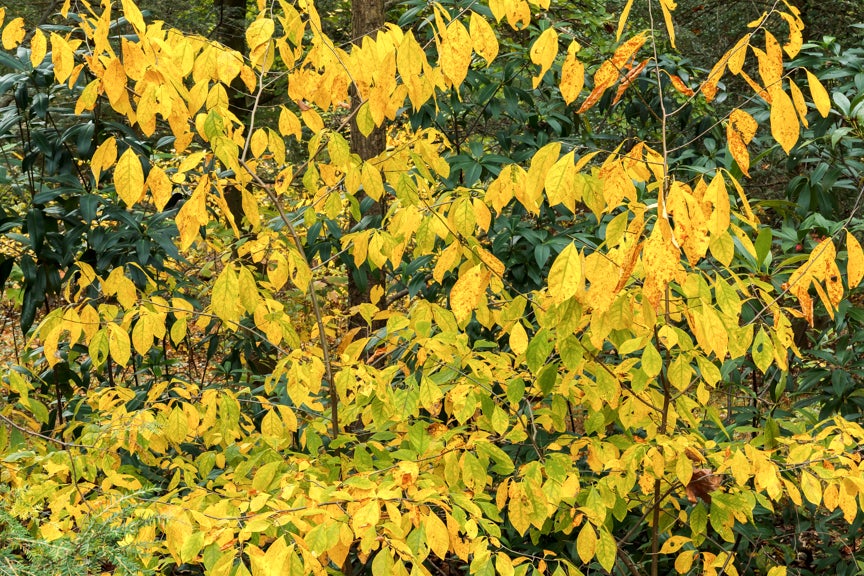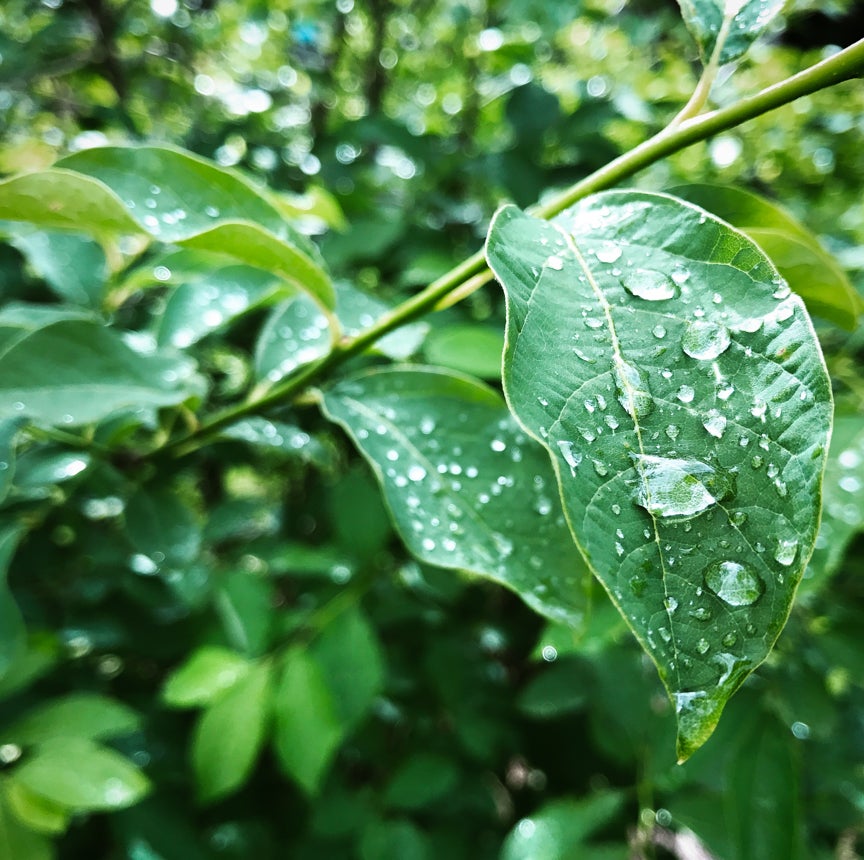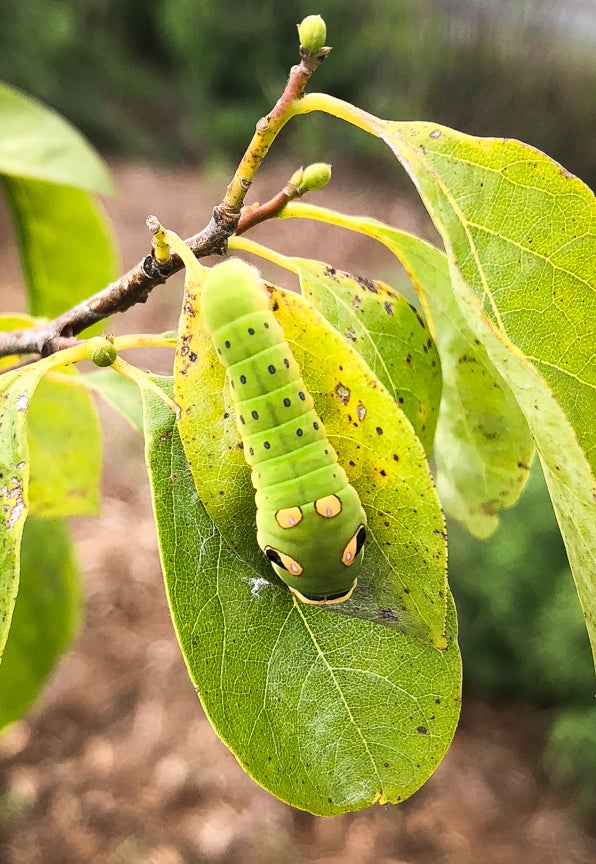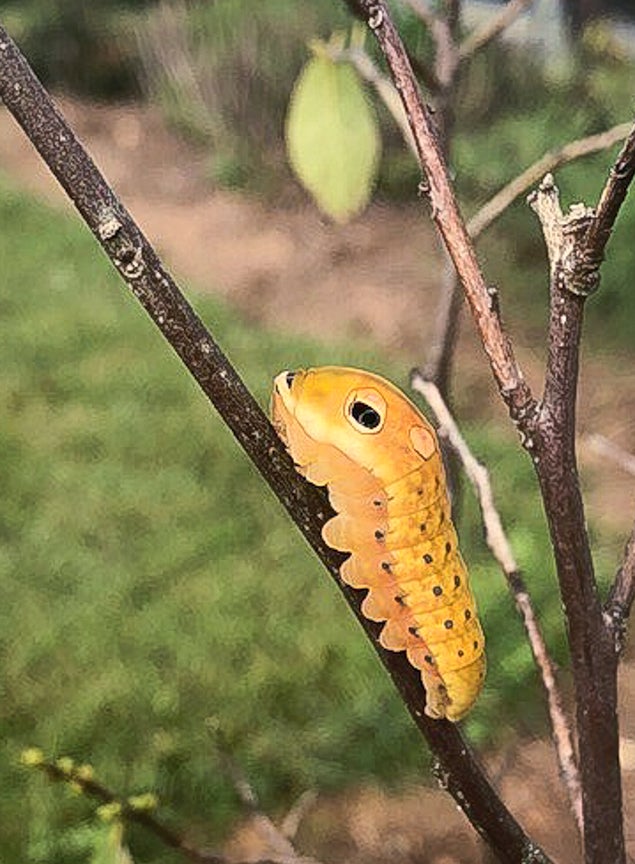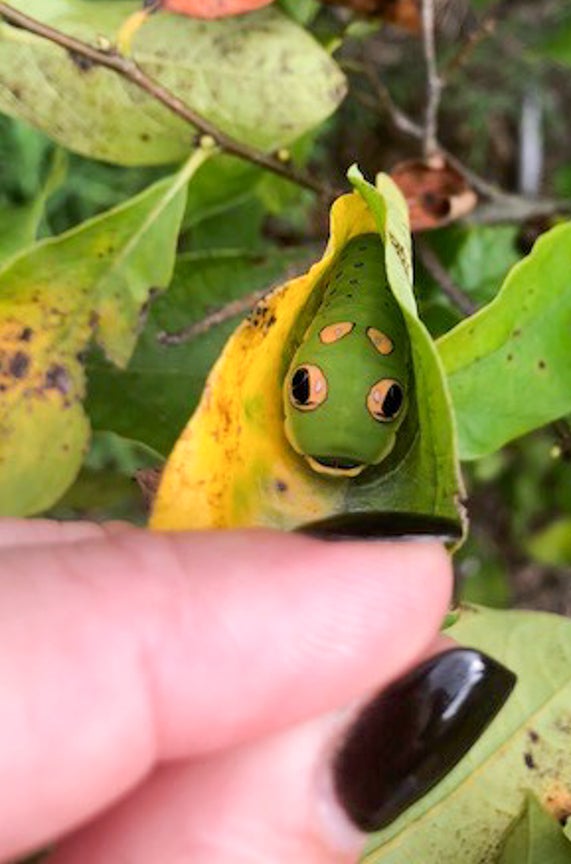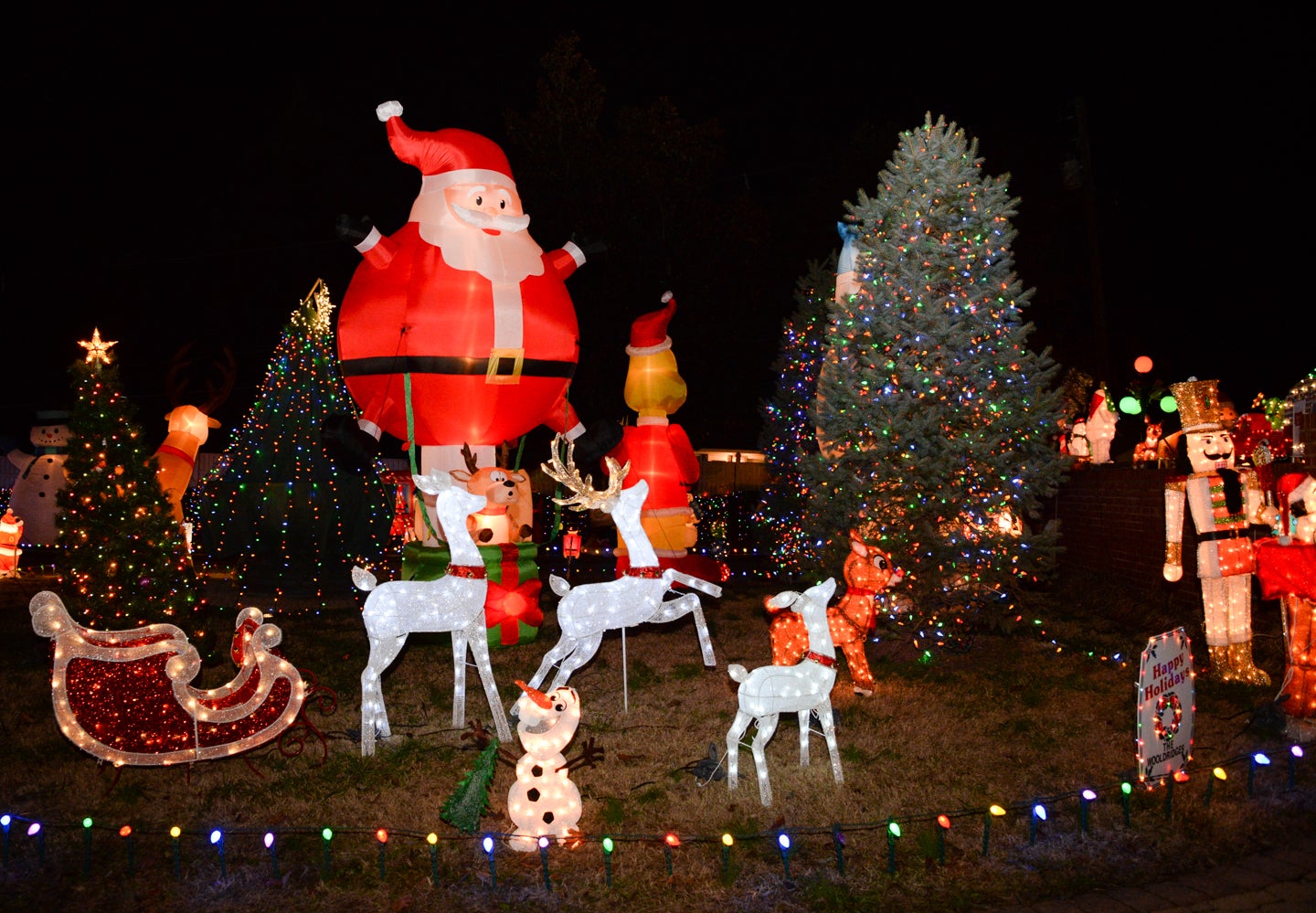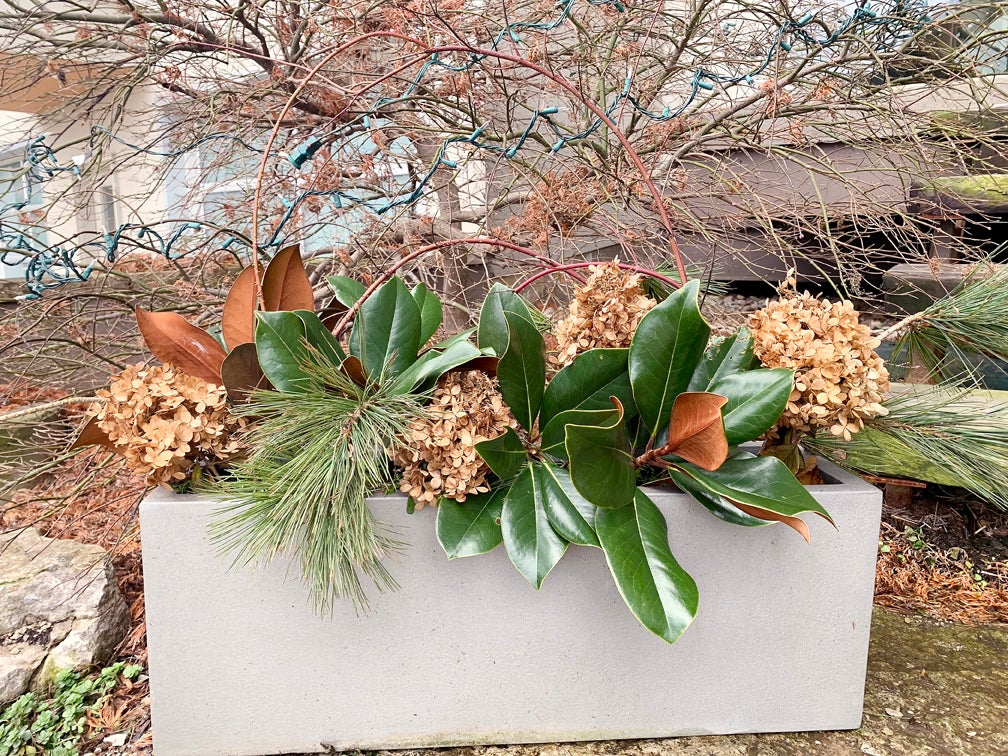Spicebush, Lindera benzoin, is not only a hardy Kentucky native shrub in a variety of conditions, it is also the host plant for the spicebush swallowtail butterfly, Papilio Troilus and others. Prepare to fall in love with the scented foliage, the early spring bloom, the yellow fall color, the fruit,and best of all — the cutest, most cartoonish caterpillar you will ever meet.
The deciduous shrub is native to the Eastern United States, grows to 6- to 12-feet tall by 6- to 12-feet wide and can be grown in full sun or full shade in a variety of soil conditions! Birds and butterflies are attracted to the plant, while it is deer resistant.
Multi-season interest for this plant is strong. Clusters of tiny yellow flowers bloom along the branches in early spring, just before the foliage emerges — a more natural looking forsythia if you will. The light yellow bloom is great combined with spring bulbs such as muscari and daffodils or any early spring native bloomer.
Flowers of the female plant produce bright red drupe fruit (berry-looking) in fall when pollinated by a male spicebush. High in lipids (fats), the fruit is particularly useful to migrating birds.
In summer, the green, disease free foliage is clean and simple. The rounded, natural shape is great for hedges, shrub borders, woodland gardens, along streams or ponds, naturalized plantings or a single planting.
In the fall, the yellow foliage color is spectacular. In winter when the plant is defoliated, you can admire the gray-brown bark speckled with light colored lenticels.
The best part of the plant are the spicebush swallowtail larvae, which feed on the leaves. Small swallowtail spicebush larvae are brown, resembling bird droppings, and mature to green caterpillars. They curl up in the leaves, leaving a silky thread-like material. Once emerged from the chrysalis, the female butterfly is black and blue and the males have a bit of emerald green against a black background. It is also the host for the Eastern tiger swallowtail and promethea silkmoth.
For human consumption, tea can be made from the aromatic leaves and twigs and the dried and powdered fruit can be used a spice. Native spicebush adds so much to your garden and your life with it’s beauty, function and ability to attract birds and butterflies.

